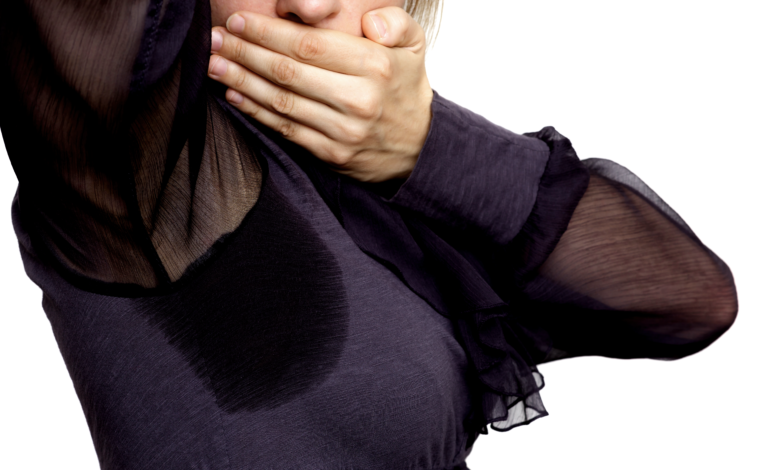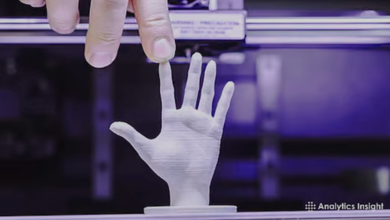What Is Axillary Hyperhidrosis?

The medical term for excessive perspiration beneath the arms is axillary hyperhidrosis. Generally speaking, 3% of Americans suffer from hyperhidrosis.
When the body doesn’t need to be cooled, excessive sweating happens. It’s still unclear what causes excessive perspiration under the arms. On the other hand, the illness might be brought on by an issue with the body’s sweat regulating system.
Although the majority of instances are of the main type, there are secondary forms of this kind of hyperhidrosis as well. Although hyperhidrosis cannot be prevented, there are strategies to assist treat and manage the illness as well as the body parts it affects.
Read More : Heat Exhaustion and Heat Stroke Symptoms
Symptoms
When not moving around much, a person with excessive underarm sweating may notice or feel a lot of perspiration. Their skin could feel damp for extended periods of time, and their garments might be drenched under their arms. Frequent skin infections may also be experienced by an individual with axillary hyperhidrosis.
Causes
Primary axillary hyperhidrosis is the term used to describe excessive perspiration beneath the arms that is not brought on by another illness. Additionally, secondary hyperhidrosis, or widespread hyperhidrosis, may cause perspiration underarms in certain persons. Notably, secondary hyperhidrosis may also be localized, or limited to a particular location, however this form of the illness is less prevalent.
Primary hyperhidrosis seems to have a hereditary compone nt, albeit this is not entirely understood. Even still, the condition’s precise causes remain uncertain.
The occurrence of hyperhidrosis has a cause. There are eccrine sweat glands on the cheeks, palms, soles, and axillae. When under physical or mental stress, these glands react to messages from the sympathetic nervous system. On the other hand, excessive sweating results from hyperhidrosis, which overreacts the sympathetic nervous system.
Risk Factors for Axillary Hyperhidrosis
The following are some things that make someone more likely to develop hyperhidrosis:
- Family history of excessive sweating
- Medical conditions that result in sweating
- Medicines or foods that lead to hyperhidrosis
Also, primary hyperhidrosis tends to start during childhood.
Diagnosis
When making a diagnosis, a dermatologist will inquire about the patient’s medical history and symptoms. Testing may not always be necessary. In other situations, a dermatologist could do a sweat test using a powder that reacts to moisture to change colour.
Providers may assume hyperhidrosis if a patient has excessive perspiration for at least six months without any apparent reason. When two or more of the following conditions are satisfied, they could additionally take the following into account:
- Sweating in both directions symmetrically at least once a week
- Start of excessive perspiration before the age of 25
- History of hyperhidrosis in the family
- Absence of perspiration when you’re sleeping
Treatments
For axillary hyperhidrosis, there are several therapy options available that aim to reduce excessive sweating and enhance a patient’s quality of life.Together, a dermatologist can choose the best course of action.
Antiperspirants
Antiperspirants are frequently the first therapy that medical professionals would utilize since they are the least intrusive and least costly option.
After using antiperspirant, the perspiration in that region sticks to the product, causing antiperspirant particles to be drawn into the pores under the skin. As a result, the sweat ducts “plug,” telling your brain to cease transmitting signals to the place where you should be sweating.
Botox
The US Food and Drug Administration (FDA) has authorized Botox (onabotulinumtoxinA) for the treatment of primary axillary hyperhidrosis.The nerves that cause perspiration may be momentarily blocked by these injections.
miraDry
An FDA-approved tool for treating this kind of hyperhidrosis is called MiraDry. The underarm sweat glands are destroyed using microwave technology without causing any skin damage. Even while occasionally two treatments are sufficient, other patients may still benefit from further sessions.
Oral Medications
Oral prescription drugs have the potential to temporarily inhibit sweat gland production. Oral anticholinergics, including oxybutynin, are useful for treating hyperhidrosis.
Just be advised that adverse effects including dry mouth, cramping in the muscles, and retention of urine might occur with these prescriptions.
Underarm Surgeries
Treating excessive underarm perspiration may potentially include underarm surgery. Typical methods include of:
- Excision entails the removal of sweat glands
- Curettage: the removal of sweat glands by scraping
- Sweating glands are suctioned out during liposuction
- Sweat glands are vaporized by laser
Dermatologists may combine several techniques for each procedure. These operations may have long-term repercussions because they either permanently remove or damage sweat glands.
How Preventable Is Axillary Hyperhidrosis?
Since primary hyperhidrosis is usually the source of excessive underarm perspiration, the condition cannot be prevented. In general, primary hyperhidrosis cannot be prevented.
Furthermore, secondary hyperhidrosis is often unavoidable. However, in the event that an individual has secondary axillary hyperhidrosis, there can be methods to eradicate signs. This might include doing things like stopping certain foods or beverages that cause excessive perspiration or changing prescriptions. The American Academy of Family Practice. Overheating.
Living With Axillary Hyperhidrosis
For hyperhidrosis, the prognosis is not very good, especially in more severe instances. This is due to the possibility of the aforementioned cultural, emotional, and psychological issues.
Even while treatments don’t always work, they might nevertheless assist you in controlling your symptoms. Applying antiperspirants before to bed and using them in accordance with a dermatologist’s instructions might be helpful.
Read More : The Incredible 9 Health Benefits of Tomatoes: A Nutrient-Packed Superfood
Additionally, you may be able to exert some control over your sweating by maintaining a sweat diary to identify your sweat triggers.
Excessive perspiration beneath the arms is referred to as axillary hyperhidrosis. Its precise etiology is unclear, although some circumstances, such as a family history of the disorder, raise an individual’s risk of developing it.
Because it is often the outcome of primary hyperhidrosis, having the disease may also be unpleasant and upsetting, and there is no known prevention. Fortunately, if you have the disease, there are a number of therapies you may take, such underarm surgery and antiperspirants, to lessen how much you sweat.










